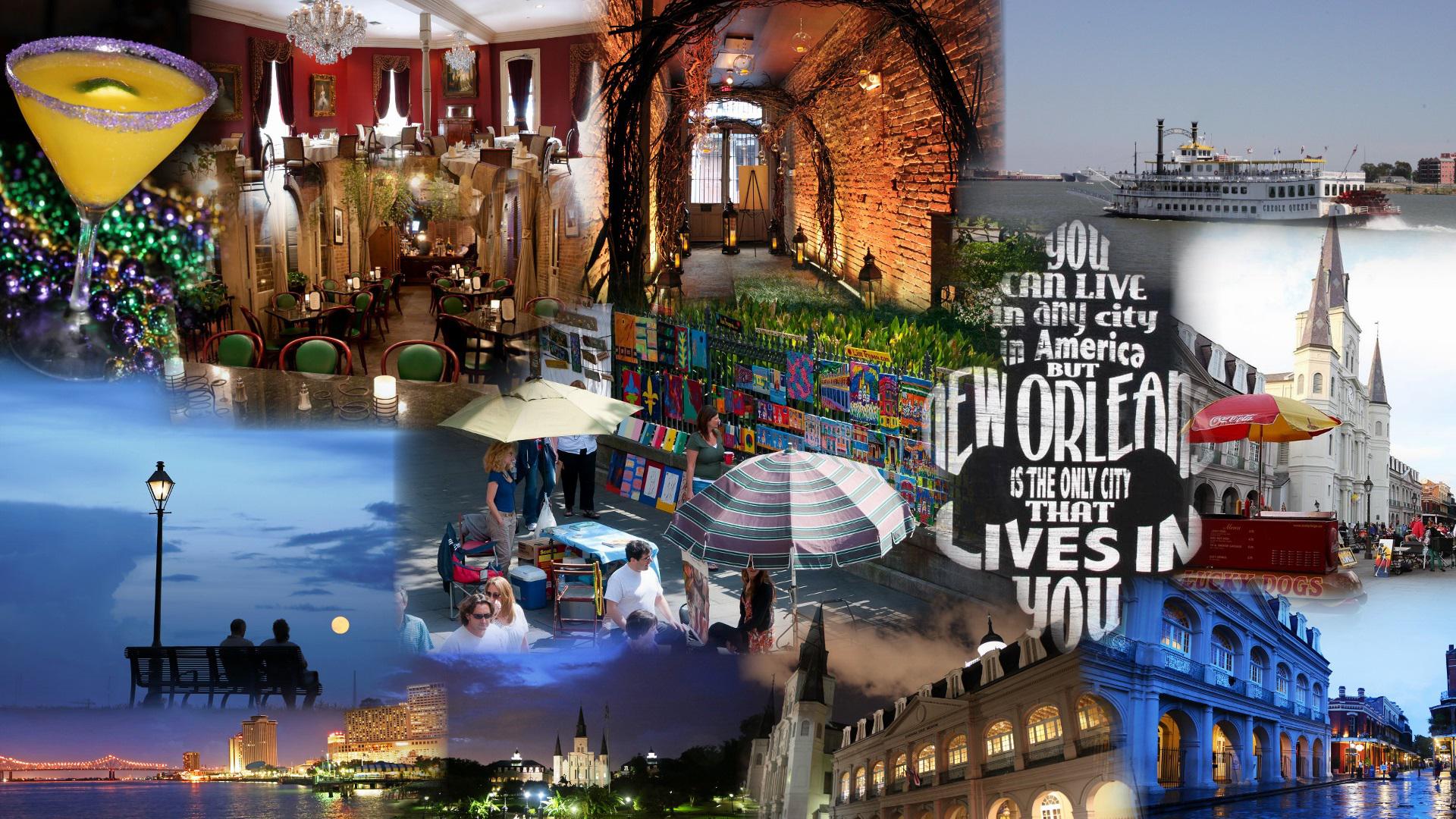New Orleans, LA
New Orleans, city, southeastern Louisiana, U.S. Unquestionably one of the most distinctive cities of the New World, New Orleans was established at great cost in an environment of conflict. Its strategic position, commanding the mouth of the great Mississippi-Missouri river system, which drains the rich interior of North America, made it a pawn in the struggles of Europeans for the control of North America. As a result, the peoples of New Orleans evolved a unique culture and society, while at the same time blending many heritages. Its citizens of African descent provided a special contribution in making New Orleans the birthplace of jazz.
New Orleans is a city of paradox and contrast: while it shares the urban problems afflicting other U.S. cities, it has nevertheless preserved an exuberant and uninhibited spirit, perhaps best exemplified by its Carnival season, which culminates in the famous annual Mardi Gras, when more than a million people throng the streets. The city also has a solid economic base: it is the largest city in Louisiana, one of the country’s most important ports, a major tourist resort, and a medical, industrial, and educational centre. It was devastated by Hurricane Katrina in August 2005, when the levees protecting the city were breached and nearly all of the city was flooded. The storm and its aftermath killed hundreds, caused massive property damage, and forced a full-scale evacuation of the city. Area city, 199 square miles (516 square km); metropolitan area, 1,907 square miles (4,939 square km). Pop. (2000) 484,674; New Orleans–Metairie–Kenner Metro Area, 1,316,510; (2010) 343,829; New Orleans–Metairie–Kenner Metro Area, 1,167,764.
Landscape
City layout
The city of New Orleans and Orleans parish (county) are coextensive, occupying a point at the head of the Mississippi River delta at the Gulf of Mexico. The boundaries are formed by the Mississippi River and Jefferson parish to the west and Lake Pontchartrain to the north. Lake Pontchartrain is connected by The Rigolets channel to Lake Borgne on the east (and thence to the gulf), and the southern boundary of New Orleans is made up of St. Bernard parish and, again, the Mississippi River. The city is divided by the Mississippi, with the principal settlement on the east bank. The west bank, known as Algiers, has grown rapidly. It is connected to eastern New Orleans by the Greater New Orleans Bridge (also known as the Crescent City Connection). The bridge, completed in 1958, proved to be a bottleneck to the city’s traffic; a second, adjacent bridge designed to reduce congestion was completed in 1988.
The early city was located on the east bank along a sharp bend in the Mississippi, from which the nickname “Crescent City” is derived. The modern metropolis has spread far beyond this original location. Because its saucer-shaped terrain lies as low as 5 to 10 feet (1.5 to 3 metres) below sea level and has an average rainfall of 57 inches (1,448 mm), a levee, or embankment, system and proper drainage have always been of prime importance. There had long been concern that a powerful storm could inundate the low-lying city; such an event occurred in 2005, when Hurricane Katrina produced a storm surge that overwhelmed the levees protecting New Orleans, and about four-fifths of the city was flooded. Less than a month later, a second hurricane passing to the west caused some levees to fail again, flooding a few areas of the city once more.
People
The population of New Orleans has been declining. Whites account for less than one-third of the total, whereas in 1960 they made up almost two-thirds. In contrast to the population decline in Orleans parish, the adjacent parishes of St. Bernard, Plaquemines, Jefferson, St. Charles, St. John the Baptist, and St. Tammany—which, together with Orleans, compose the New Orleans Metropolitan Statistical Area (MSA)—have shown steady increases. Since the African American population in most of the adjacent parishes is quite small, these figures indicate the general trend of white movement to the suburbs typical of most major U.S. cities since 1950.
The shift in population to the suburbs has been motivated less by racial tension (although this may play a part) than by desires for better and more modern living facilities. The fact that a large segment of the Black population resides in declining neighbourhoods (some segregated, some integrated) has spurred both Black and interracial political, social, and religious organizations to work either independently or with city and federal agencies on projects to improve the quality of life for low-income citizens. The additional fact that New Orleans has upper-class and middle-class Black populations has been a significant factor in such projects.
History of New Orleans
Foundation and early settlement
The decision to found New Orleans, or Nouvelle-Orléans, was made in Paris in 1717 by John Law’s Company of the West, which had taken control of Louisiana that year. The colony’s new proprietors envisioned New Orleans (named for the French regent, Philippe II, duc d’Orléans) as a “port of deposit,” or transshipment centre, for future trade from upriver in the Mississippi River valley. Jean-Baptiste le Moyne de Bienville, the man who suggested the site, was entrusted with the actual foundation of the city. Clearing of underbrush for the new city probably began in March 1718. The engineers charged with this task met with problems arising from uncooperative convict labour, a shortage of supplies, two severe hurricanes (in 1721 and 1722), and the unpleasant physical conditions of mosquito-infested swamps as they set up the first crude dwellings covered with bark and reeds. An engineer, Adrien de Pauger, drafted the first plan for the town, encompassing what is now the Vieux Carré and consisting of 66 squares forming a parallelogram.
The first residents were a colourful mixture of Canadian backwoodsmen, company craftsmen and troops, convicts, slaves, prostitutes, and indigents. In a census taken in November 1721, New Orleans had a population of 470 people: 277 whites and 172 Black and 21 Indian slaves. In 1722 New Orleans was designated the capital of Louisiana, and in 1731 the city returned to the control of the French crown. More respectable colonists began to arrive, but growth continued to be precarious. The main economic staples grown in the vicinity of New Orleans were tobacco and indigo for export and rice and vegetables for local consumption. Naval stores were also exported. French ships, however, were reluctant to call at New Orleans to pick up such cargo because its value did not match its bulk.
In 1762 France, ready to part with its unprofitable port, secretly agreed to cede Louisiana to Spain, and, by the Treaty of Paris (1763), Spain received New Orleans and the Louisiana Territory west of the Mississippi. After a brief rebellion—which was sternly suppressed—the inhabitants of New Orleans enjoyed peace and a growing prosperity under Spanish law, while trade arose with the British colonies in spite of Spanish restrictions. At the same time, English-speaking colonists were moving west to settle along the tributaries of the Mississippi. In the decade of the American Revolution, these “Kaintucks,” as they were called, began floating their cargoes downriver to New Orleans; several times Spanish officials suspended the right of deposit of American goods at New Orleans in response to the boisterous conduct of American frontiersmen along the city’s upper levee.
In 1800 Louisiana was secretly returned to Napoleon’s France, and by 1803 the French emperor had negotiated its sale to the United States. The ceremonies transferring Louisiana to France and later to the United States took place in New Orleans’s Cabildo and main square, the Place d’Armes (now Jackson Square), in the winter of 1803.
Source:







